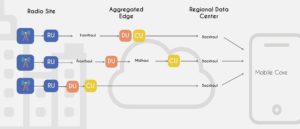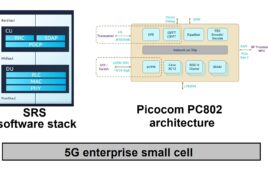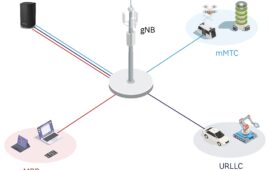Representatives from Open RAN suppliers and users explain how how government policy can affect the ongoing development and deployment of 5G networks.
On August 4, The OpenRAN Policy Coalition held a webcast, “Open RAN 101: Promoting a Diverse and Competitive Market for 5G and Advanced Wireless Technologies” where panelists discussed 5G’s open RAN concept, how it can increase security, and how it can open competition and reduce network deployment and upgrade costs.
The panel consisted of:
- Chris Boyer (Moderator), Chairman, Open RAN Policy Coalition and Vice President of Global Security and Technology Policy, AT&T.
- John Baker, Senior Vice President of Business Development, Mavenir.
- Doug Brake, Director of Broadband and Spectrum Policy, Information Technology & Innovation Foundation.
- Brian Hendricks, Vice President of Policy and Public Affairs, Nokia Americas.
- Takehiro Nakamura, Senior Vice President and General Manager of the 6G Laboratories, NTT DOCOMO.
Because the 45-member OpenRAN Coalition’s purpose is to advocate for open radio access networks in 5G, the session opened with remarks from two members of Congress who support the concept: Rep. Greg Walden (R-OR) and Rep. Doris Matsui (D-CA). Walden and Matsui cosponsored the Secure and Trusted Communications Networks Act and the USA Telecommunications Act, which calls for funding of a $750M grant for companies to install 5G network equipment from “trusted vendors” and promotes “the use of technology, including software, hardware, and microprocessing technology, that will enhance competitiveness in the supply chains of Open RAN 5G Networks.”

5G mobile networks separate functions into radio units, distributed units, and control units. Click image to enlarge
Following the remarks, the panelists covered issue relating to the development and deployment of open RAN. Baker focused on interoperability and testing, which is essential if Open RAN will take hold. He predicts that 10% of networks will use Open RAN equipment by 2024. That may not sound like much, even four years from now. That should increase as network operators replace existing 5G baseband units with Open RAN radio units, distribution units, and centralized units. Of course, government money in the form of grants to remove and replace “untrusted” baseband units with “trusted” products.
Nokia’s Hendricks noted that by 2021, the company will have a full suite of Open RAN interfaces. “Chinese suppliers are government funded,” he said. “We must support R&D and commercialization.”
Nakamura added that NTT Docomo is already deploying 5G networks using Open RAN products that comply with specification developed by the O-RAN Alliance. Do in so, according to Nakamura, reduced supply-chain risks by not having to depend on a single supplier.
“You have to have a plan on policy,” said Brake. That’s lead to Huawei’s advantage in the marketplace. But there’s a risk. We don’t want government specifying the technical aspects of 5G networks. If carriers are going to replace Huawei equipment, then it should be with Open RAN compliant products.”
You can watch the complete session below. The technical panel session starts at 18:15, following the political remarks.
Related articles




Tell Us What You Think!